Beginnings

The Banbury and District Camera Club, as it was first known, was founded in 1946 by a group of enthusiastic photographers, the aim being to bring together all those interested in photography and to improve the standard of amateur work in the district. The very first event was announced in the Banbury Guardian on 6 May 1946. The first meetings were held in Norman Blinkhorn’s studio, or the ironmongery shop of John Gardner at the corner of Parsons Street and Church Lane. A plaque now commemorates Mr Gardner’s shop. The earliest meetings consisted of talks and demonstrations by members, quizzes and shows of members’ prints and films. In 1948 a room was rented in a basement in West Bar, where a club room and darkroom were fitted up.

Isabel Smith joined in 1948 and recalled “the roaring fire which helped to combat the dampness of the basement, and the awe and respect with which I regarded those expert photographers who produced such wonderful and painstaking prints!” The very first page of the club’s Cash Book records sums of 19/11d (almost £1) for “Timber for darkroom”, and £15 19s 2d (£15.97)for enlargers. The kind of equipment which was used in the club’s darkroom is illustrated in this photograph which was taken at 51 The Green, then the School of Art, to which the club moved in 1952 and where it remained until 1984. Initially, the club had its own darkroom-cum-clubroom, as shown and a room to use as a studio. With this link, the School of Art’s twelve week photography course was run in association with the camera club, as reported in the Banbury Guardian in March 1952.
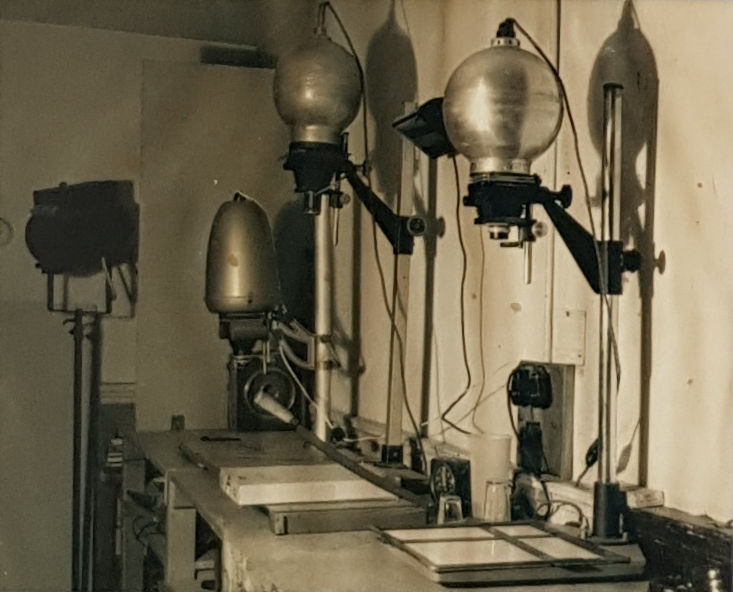
Gratton Darbishire — An Early Member
Among the members in the club’s first year, Gratton Darbishire, who farmed near Byfield, joined in March 1947. Bearing in mind the entry on the 1947 winter, it’s perhaps surprising that the road from Byfield to Banbury was open. Gratton was a very accomplished photographer and, from the quality of the many prints which are still prized by Byfield residents, it’s clear that he had an excellent camera and first-rate darkroom skills. He is the only member from that first year for whom we have photos taken at the time. The examples below are taken from the Byfield Photo Museum, a collection of around 3,500 photos of Byfield and the surrounding area, dating back to 1870. While long aware of Gratton’s photos in that collection, we only discovered that he had been a member of the camera club when Alan Sargent’s researches in the Banbury Guardian on-line archive found a reference to his membership in a report of his wedding. Gratton’s bride, Dorothy Mary Dearden, “wore a French brocade wedding gown with a headdress of lilies, and carried a bouquet of carnations.” We can only assume that Gratton wore a suit.
Banbury Guardian for 6 May 1946 – The first mention of the club
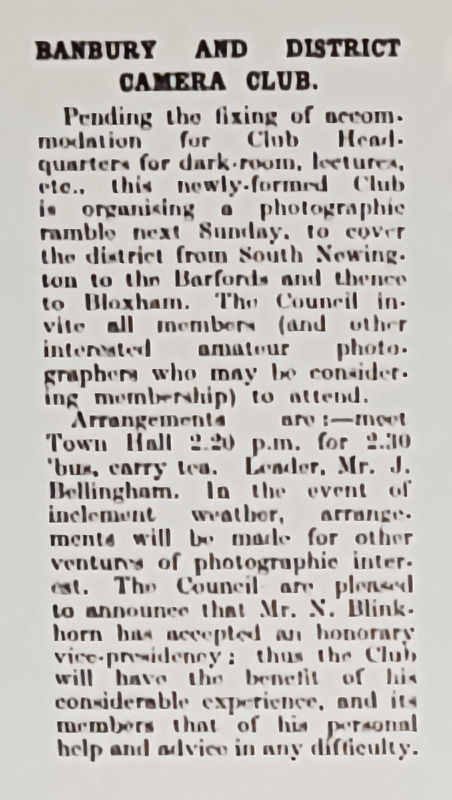
The newly-formed club’s first event was a “photographic ramble” on Sunday 12 May. The members, advised to “carry tea”, were to meet at Banbury Town Hall and travel by the 2.30 bus to South Newington for the start of the ramble to Bloxham. They could easily use the scheduled service as there were just nine members at that time.
1946 — The wider picture
There were 22 members in that first year and the club’s annual subscription was one guinea (£1.05). That really was a significant sum — a substantial fraction of a week’s wages for many workers. Average annual earnings then were £280 (equivalent to around £8,500 in 2016). The subscription remained at £1.05 until 1963.
Aftermath of War
This advertisement, from Ross of London, in the 1946 issue of the British Journal Photographic Almanac, reminds us how soon this was after the war: “… at long last we are being released from the manufacture of War Winning Optical Instruments.”
Scarcity of Cameras
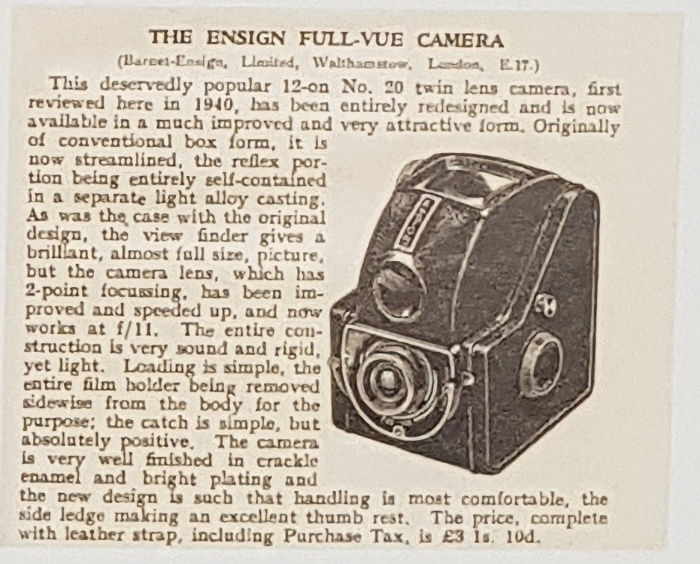
That same issue of the 1946 Almanac has a review of the new equipment, accessories and chemicals introduced in the year. There is a grand total of two cameras, both of British manufacture. This Ensign Full-Vue took roll film, had very limited controls and, at £3 is 10d (£3.09), it was not a cheap purchase. Even if they had the money, members of the Banbury Camera Club would have had a very restricted choice of new cameras and would mostly have relied on pre-war designs. Isabel Smith is an earlier camera in the photo above.
Now that, at long last, we are being released from the manufacture of War Winning Optical Instruments, the great resources and modern manufacturing methods of the ROSS organisation can largely be turned to supplying peace-time needs. Much that is good has come out of the war. Necessity —in the 1939-40 period—created problems that had to be solved.
1947 – A winter to remember
Beginning on 21 January 1947, cold spells brought large drifts of snow to the country, blocking roads and railways. Power stations were starved of coal and electricity supplies were severely restricted. Radio broadcasts were limited, television services were suspended, some magazines were ordered to stop being published and newspapers were cut in size. Towards the end of February there were also fears of a food shortage, as supplies were cut off and vegetables were frozen into the ground. Milder weather in March brought severe floods.

1950s and 1960s
For the early activities of the club we have very few sources: the Cash Book from 1946 onwards, a handful of references in the Banbury Guardian and, most important, the account which Isabel Smith wrote in 1989.
Public Activities
Isabel described some of the ways the club contributed to Banbury life. “In the fifties and early sixties there were public exhibitions, well attended by the public and officials such as the Mayor and the local MP, shows by Gevaert and Kodak were held on several occasions.” It was common in this period for photographic companies to sponsor lecturers. Notices in the Banbury Guardian list Kodak and Ilford as sponsors, as well talks by the editor of Good Photography and by Lancelot Vining, a Fleet Street photographer who had a weekly column in Amateur Photographer. The club ran a colour slide competition, open to all in the Banbury area, and also took photographs for the North Oxfordshire Technical College prospectus.
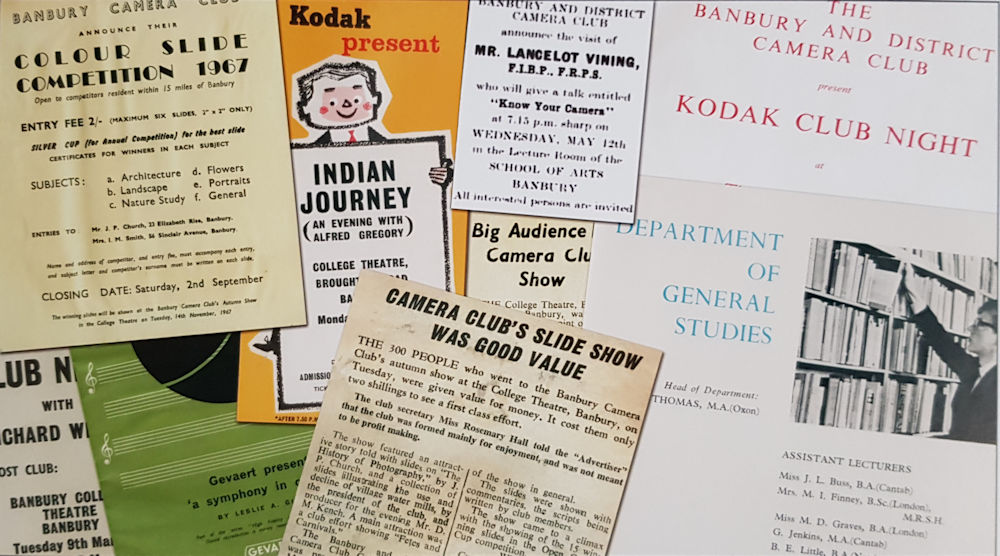
The 1950s and into the 1960s was a very successful time for the club, though the annual jumble sales advertised in the Banbury Guardian suggest that fund-raising was an issue. The membership reached 54 in 1963, by which time there were three sections, catering for black and white, colour slide, section having evenings devoted to its particular interest. The members of the cine section left in the same year to form their own club.

An Impressive Project — Photographing the Mayor in 1959 Isabel describes the production of a huge 6 ft by 4 ft portrait of the Mayor of Banbury. This was all done in the club room on the top floor of 51 The Green from a 4 cm by 4 cm negative — taking the picture (when the Mayor, Miss Gwendoline Bustin, arrived with the Macebearer carrying the robes and regalia), enlarging the negative on a large sheet of photographic paper pinned to the wall, developing the print in a ‘dish’ made from 4in x 4in wood lined with plastic (thank goodness it didn’t leak or the college authorities would have had something to say), fixing the print in the same dish with members gathered round with large sponges to keep the agitation going, the print finally being taken home rolled up in the leg of my husband’s pyjamas to wash in the bath. For a short time this portrait was hung over the stairs in the Town Hall, but it mysteriously disappeared about 1984.” It’s likely that Isabel used her own camera for this photo — the excellent Rolleiflex 4 x4 of German manufacture.
Timeline: 1950 – 1962
1950s — The wider picture

The 1950s saw increasing prosperity in Banbury and the country in general. It was famously summarised by Harold Macmillan in 1957 as “most of our people have never had it so good.” The British Journal Photographic Almanac for that year listed a far wider range of cameras than in 1946. Many of these were of British manufacture, some of high quality and others of somewhat eccentric design. They were not yet exposed to competition from Germany and Japan, as there were still severe restrictions on the importation of photographic equipment. A photo of the club in action shows an elderly camera which took glass plates rather than film.
Periflex Camera
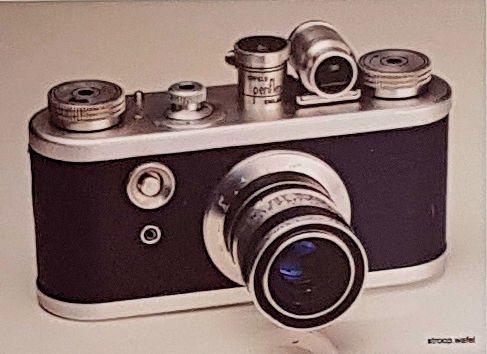
This British camera took 35 mm film and had an unusual focusing system. The photographer looked down into a periscope to focus the lens, but then switched to a separate viewfinder to compose the shot. When the shutter release was pressed, the periscope moved up out of the light path and the focal plane shutter opened to make the exposure. The periscope descended again when the film was wound on. This design was not competitive when import restrictions were finally lifted, on German and other European cameras in November 1959, and on Japanese cameras from 1st January 1962.
1953 — The Coronation and Television
The live televising of the coronation Queen Elizabeth II on the BBC was a groundbreaking event, attracting a huge audience and boosting both sales and rental of TV sets. The launch of ITV in 1955, at first in London and soon spreading to all areas, added to the demand. It was surely responsible for a fall in cinema attendances and for the decline in audiences for other evening activities, such as the public shows which the camera club put on between 1965 and 1973. The Banbury Guardian records an audience of 300 for one these club shows in 1967, with tickets costing 2/- (10p).
1960s
Colour
While television remained in black and white until colour was launched on BBC 2 in 1967, colour film, and particularly 35mm colour slides for projection, became very popular with amateur photographers. By today’s standards, and compared with black and white films of the time, the films were very slow, with the classic Kodachrome rated at just 10 ASA (ISO). Between 1963 and 1977, the club ran an Open Colour Cup Competition open to all photographers in the area, but costs eventually became prohibitive and the competition ceased.
1970s and 1980s
Finances
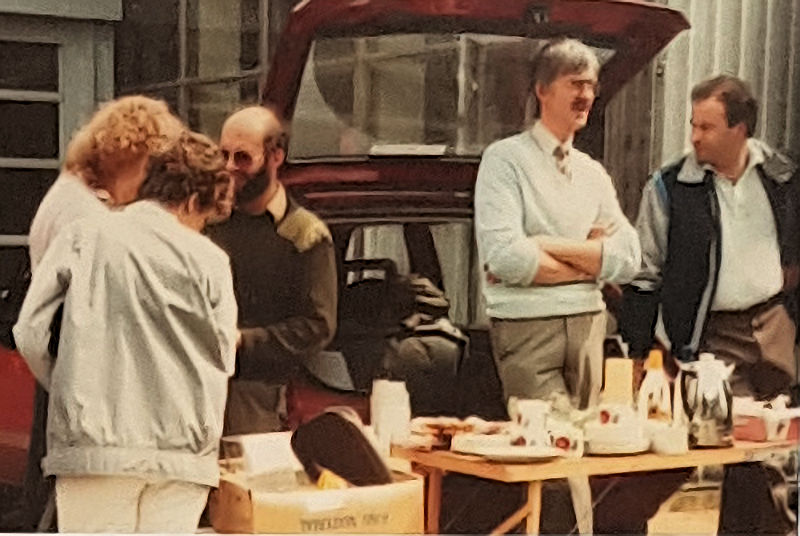
The 1970s did not open well for the camera club. The membership in 1971/2 had fallen to 22 and the treasurer reported to the annual general meeting that it had been a “disastrous year financially”. Nevertheless, the meeting resolved not to increase the annual subscription, which at that stage stood at £1.75, having been raised from £1.50 the previous year. Raising sufficient funds remained an issue and, as a successor to the jumble sales of the 1950s, a car boot sale became a regular event into the 1990s.
Outings and Excursions
Outdoor meetings and excursions to places of photographic interest had always been part of the programme, with the very first event in 1946 having been a photographic ramble. Subsequent events seem to have been less energetic. Venues included, for example, Hook Norton Brewery, Cakebreads Monumental Masons, General Foods and Steele’s Carpet Factory — although “it was a rather disappointing evening” in June 1986 when the person to have shown members round forgot the appointment. The first photograph seems to have been taken at a swimming pool around 1960, while the second shows members on a visit to Hornton Forge in 1986. There is a marked difference in the equipment being used, reflecting the huge developments in that period.
Loss of 51 The Green and its facilities
The late 1970s and early 1980s were a difficult period. The committee and annual general meeting minutes of the period record continual worries about decreasing membership, low attendance at meetings and the need to raise money. There was a suggestion from the then chairman to introduce grades of membership called Third, Second and First Class. Everyone was to start as Third Class and to progress (or not!) through successful completion of various projects. It’s not at all obvious that this would have been a solution to the membership issues.
The club had remained at 51 The Green since 1952, although by the 1980s it had lost the darkroom facility and simply had one meeting room once a week. As Isabel Smith says in her club history: “We hung on to that room until 1984, the great benefit being that we only paid for the lighting (the heating was just what was left over from the daytime heating so it was sometimes pretty cold), and sometimes not even that. So it was with considerable dismay that we learned that the building was being sold and that we would have to find somewhere else.” In the event, the club moved to the then Banbury School, where it remained until 2000. Isabel and other members of those days deserve enormous credit for carrying the club through some tricky times, when it might well have folded.
1970s and 1980s
A Revolution in Cameras
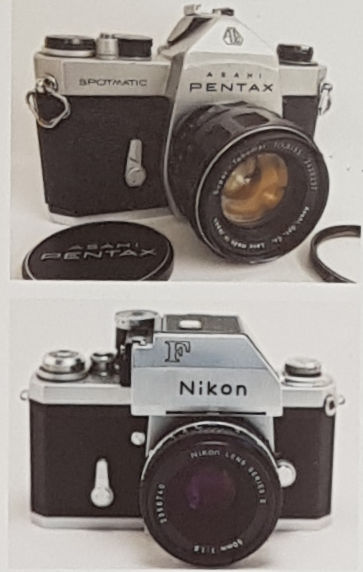
With the final removal of import controls in 1962, a very wide range of cameras became available in the UK, a development from which serious amateur photographers benefitted greatly. In particular, Japanese cameras became enormously successful, at the expense of both the British camera industry, which practically disappeared, and the much more technically advanced West German industry.
A good example of the new breed of 35 mm single-lens reflex (SLR) cameras, aimed at both professionals and amateurs, was the Asahi Pentax Spotmatic, with its built-in through-the-lens exposure meter and wide range of lenses. SLRs from Nikon, Canon, Minolta and Olympus were equally successful, competing on both quality and price. While many newspaper photographers were still using large format and plate cameras as late as 1960, by the 1970s the great majority had moved to 35 mm film, with the Nikon F series the market leader.
Even for advanced amateurs, familiar with such technicalities as shutter speed, aperture, hyperfocal distance and so on, these cameras offered greater ease of use for a wide variety of subjects. The Canon AE-1 of 1976 was a very popular SLR offering fully automatic exposure and in 1985 the Minolta 7000 AF offered both autofocus and motorised film advance.
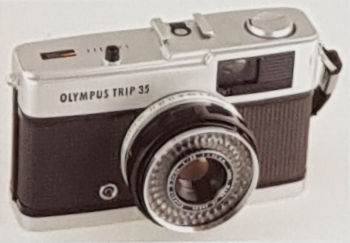
During this period manufacturers were offering the general public 35 mm compact cameras which could be used very successfully with little or no photographic knowledge. The Olympus Trip was introduced in 1967 and discontinued in 1984 — a remarkable production run. Advertisements featuring David Bailey certainly helped its popularity. The hope in camera clubs would have been that this wider adoption of photography would have brought an influx of new members, eager to learn about their new hobby.
Kodak Strikes Again
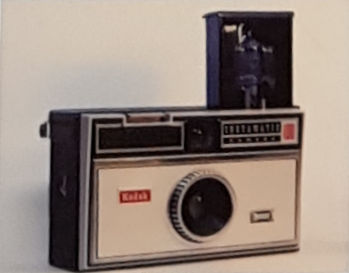
Throughout this period Kodak dominated the market for film and was able to set the standards for manufacturers of both film and cameras to follow. While 35 mm and 120 roll film remained the favoured formats for most professionals and keen amateurs, Kodak introduced some new formats to appeal to the casual snap-shooter, beginning with easy-loading 126 film for the Instamatic cameras in 1963. This was followed in 1972 by 110 film, an even smaller format, and then by the tiny Disc format in 1982. While improvements in films made these smaller formats feasible, the advances were just as obvious in the 35 mm versions, which remained the dominant format for enthusiasts. The aim was to make it easier for anyone not interested in the technicalities, through easier film loading, automatic exposure and film advance, auto-focus and pop-up flash.
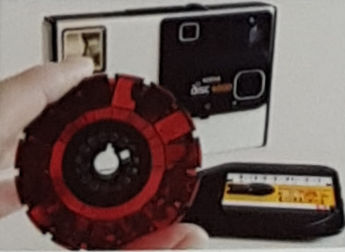
But in 1975, no attention was being paid to a ground-breaking invention by Steven Sasson, a Kodak engineer. The first self-contained digital camera at Kodak.
1990s and 2000s
From the mid-1980s to the end of the 1990s, the membership of the club hovered around 25, never getting near the high of 54 reached back in 1963. By the end of the 1990s, the average attendance at meetings was as low as a dozen. The financial consequences limited the club’s activities.
The Digital Revolution

Around 1992 (the AGM minutes are silent on this point) the club’s competition rules were amended to exclude images which had been processed with a computer. This was rather far-sighted; as yet there were no members of the club who had access to suitable, exceedingly expensive, equipment. That situation was about to change, not least through a wider ownership of desktop computers and the availability in 1997 of reasonably priced inkjet printers. With a 35 mm scanner or a Photo CD disk, it was now possible to produce excellent colour prints at home. For some members of the club this was still worrying, as they felt that the computer gave an unfair advantage. “It does all the work,” they thought. Nevertheless, the 1997 AGM agreed to allow digitally processed images in the club’s colour print competitions as a one year trial. In a 1998 appendix to Isabel Smith’s history of the club, and intending to reassure members, Andrew Spackman wrote: “Like other photographic societies and clubs, we can expect Banbury to support and encourage both traditional and new photographic techniques over the coming years.” This remains true today.
The Move to Chenderit
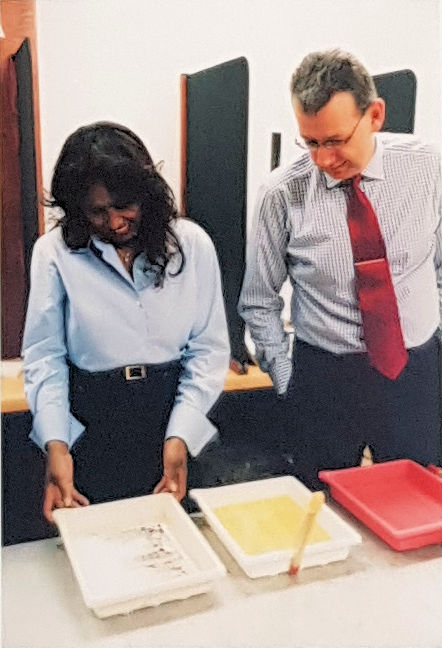
In 2000 and for financial reasons, the club moved from Banbury School to the Globe Room at Ye Olde Reindeer Inn in Parsons Street. While admirable for Oliver Cromwell’s meetings during the Civil War, and situated conveniently for the bar, it did not lend itself to practical activities. By 2002 the club was looking for alternative accommodation and was extremely fortunate to be invited by John Childs, the Head of Art, to move to his department at Chenderit School. This gave the club access to a computer suite of Macs and PCs (see photo above), a darkroom with six enlargers (right), and space for meetings and practical work. From 2004, the club was able to hold an annual exhibition in the new Michael Heseltine Gallery, thereby raising hundreds of pounds each year for Katharine House Hospice. From 2010 a new lecture theatre also became available. There can be few camera clubs with such a superb range of facilities.
The Future

In line with the developments set out in the timeline, by 2003 the first digital cameras were appearing at club events (right). In 2016 the 90 members of the club use the full range of equipment from large format and 35 mm film to DSLRs and smartphones.
If you want to know more about Banbury Camera Club in the past these pages may be of interest.
Brief History of Banbury Camera Club by Isabel Smith
with a Postscript by Andrew Spackman.
The Background Story of the Club Cups by Isabel Smith
Fine Lady Video by Rosie Burke
A Tribute To Past Members showing several past members

